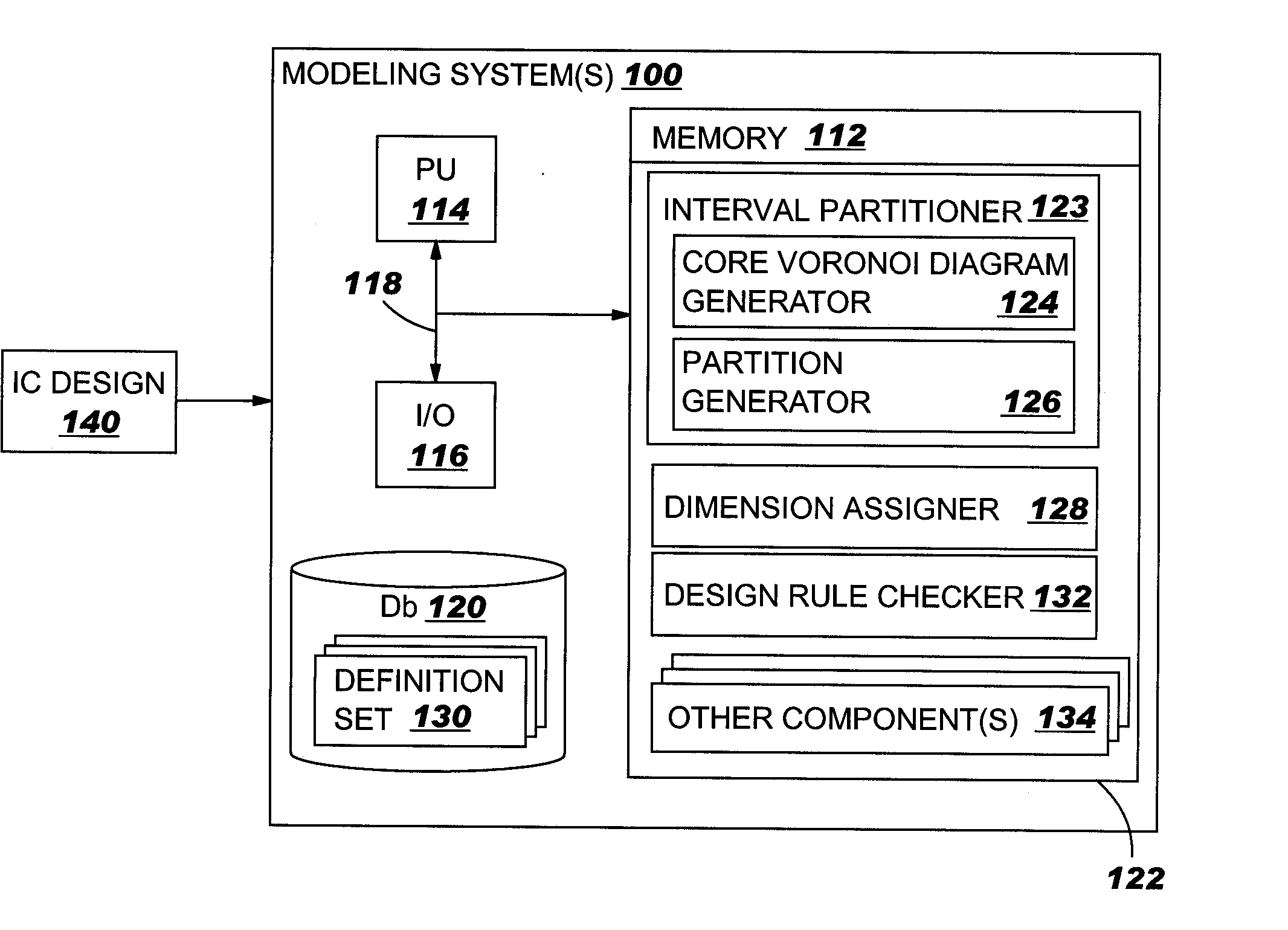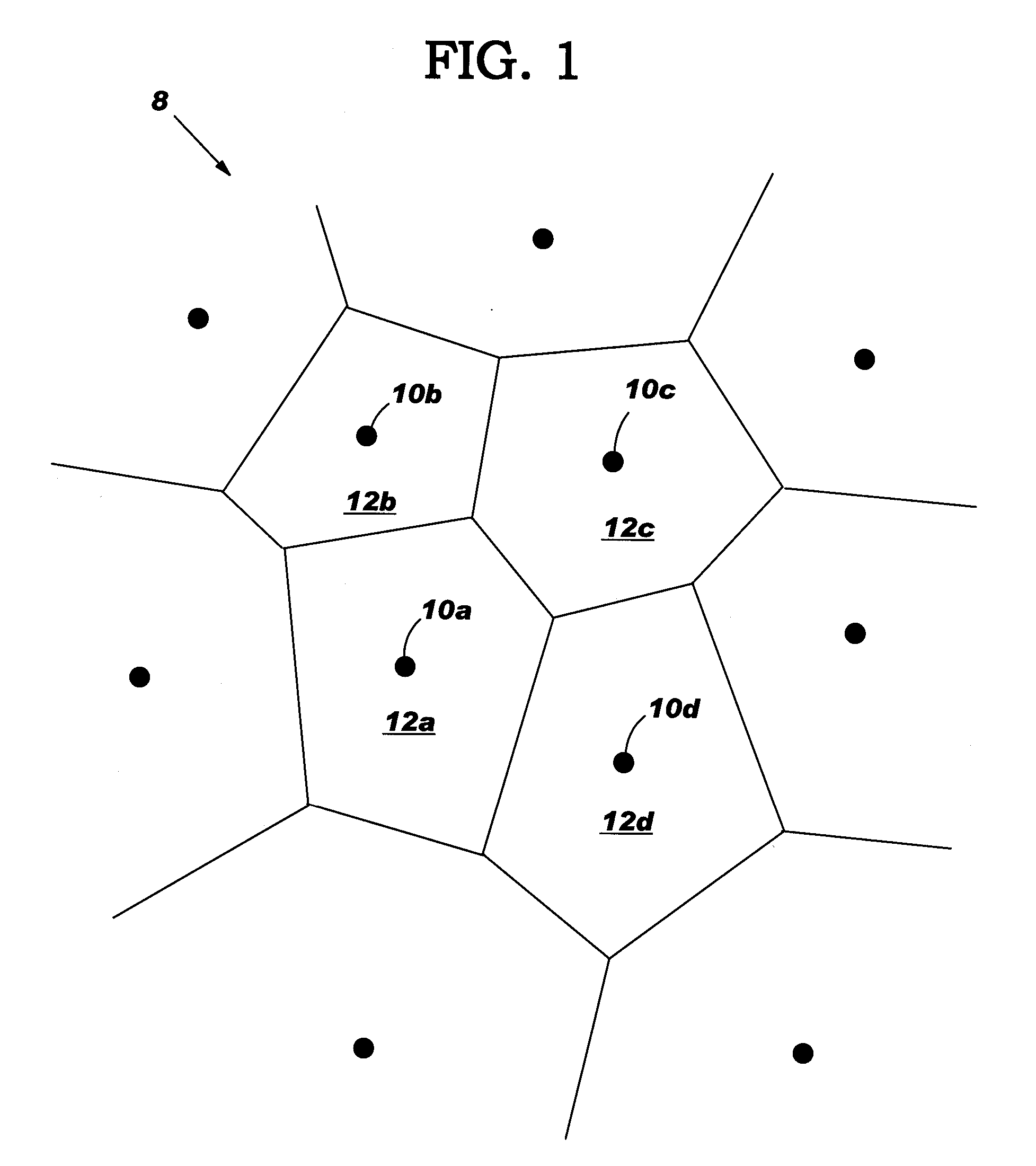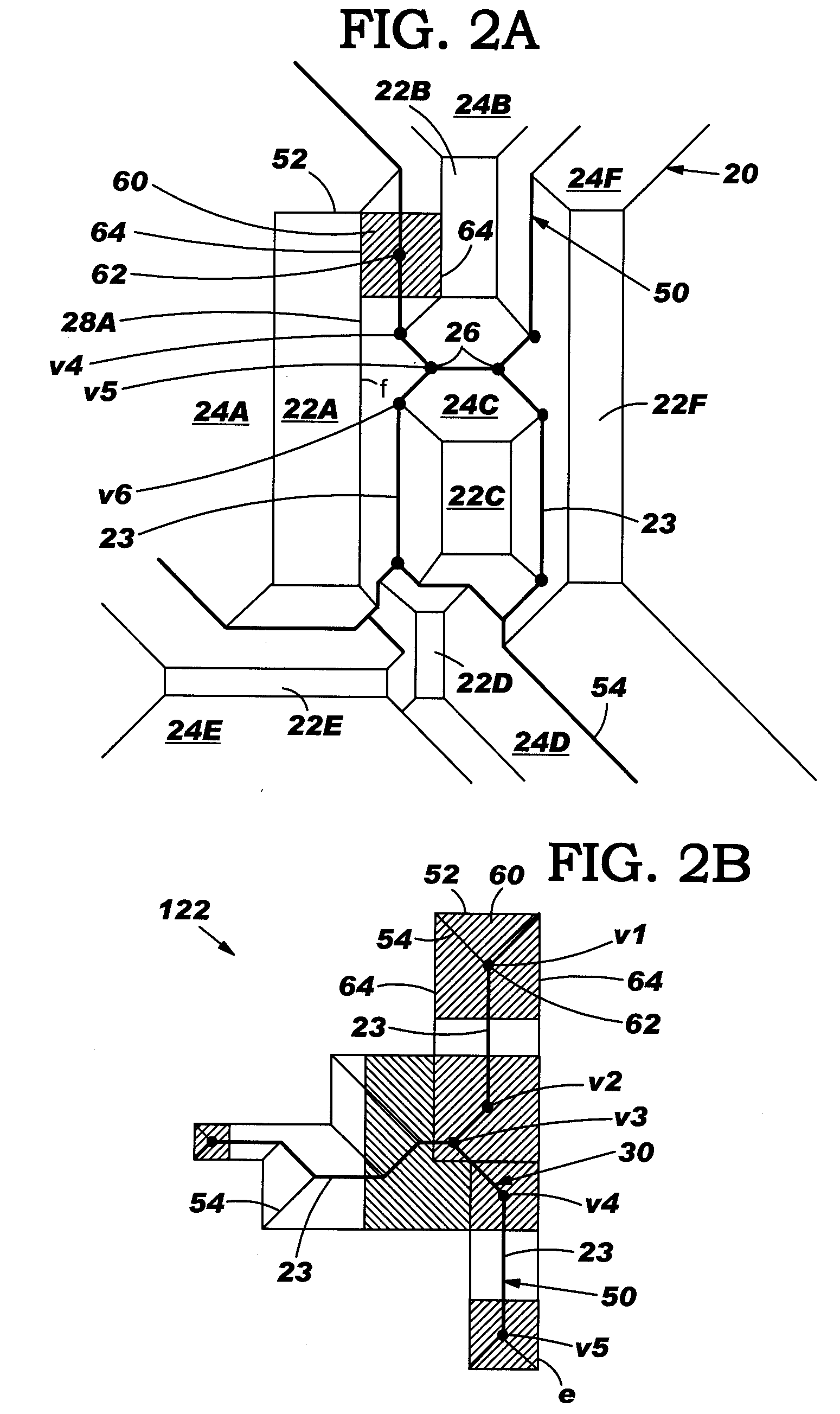IC design modeling allowing dimension-dependent rule checking
a design modeling and dimension-dependent technology, applied in the field of integrated circuit design, can solve the problems of difficult and inconsistent definition of what is a “width” of a shape, and the inability to define a “drc” among non-convex shapes, and achieve the effect of reducing the number of ic parts
- Summary
- Abstract
- Description
- Claims
- Application Information
AI Technical Summary
Benefits of technology
Problems solved by technology
Method used
Image
Examples
Embodiment Construction
[0036] For purposes of clarity only, the following description includes the following sections: I. Overview, II. General Definitions, III. System Overview, IV. Methodology, and V. Conclusion.
[0037] I. Overview
[0038] IC design rules and computer-aided design (CAD) tools normally work with boundaries of IC shapes. The invention leverages this fact by partitioning an edge of a shape into a plurality of intervals. Each interval is then assigned a dimension, including in one embodiment a local width and a local spacing, based on discrete neighboring geometry as derived from a local Voronoi diagram in the interior and / or exterior of the shape. In other words, a local width and local spacing can be mapped to an edge of a shape. As a result, every boundary point of a shape may be assigned a unique width label and a unique spacing label.
[0039] A definition set determines how an edge is partitioned and how width and spacing are assigned for an edge. Definition sets may vary depending on de...
PUM
 Login to View More
Login to View More Abstract
Description
Claims
Application Information
 Login to View More
Login to View More - R&D
- Intellectual Property
- Life Sciences
- Materials
- Tech Scout
- Unparalleled Data Quality
- Higher Quality Content
- 60% Fewer Hallucinations
Browse by: Latest US Patents, China's latest patents, Technical Efficacy Thesaurus, Application Domain, Technology Topic, Popular Technical Reports.
© 2025 PatSnap. All rights reserved.Legal|Privacy policy|Modern Slavery Act Transparency Statement|Sitemap|About US| Contact US: help@patsnap.com



